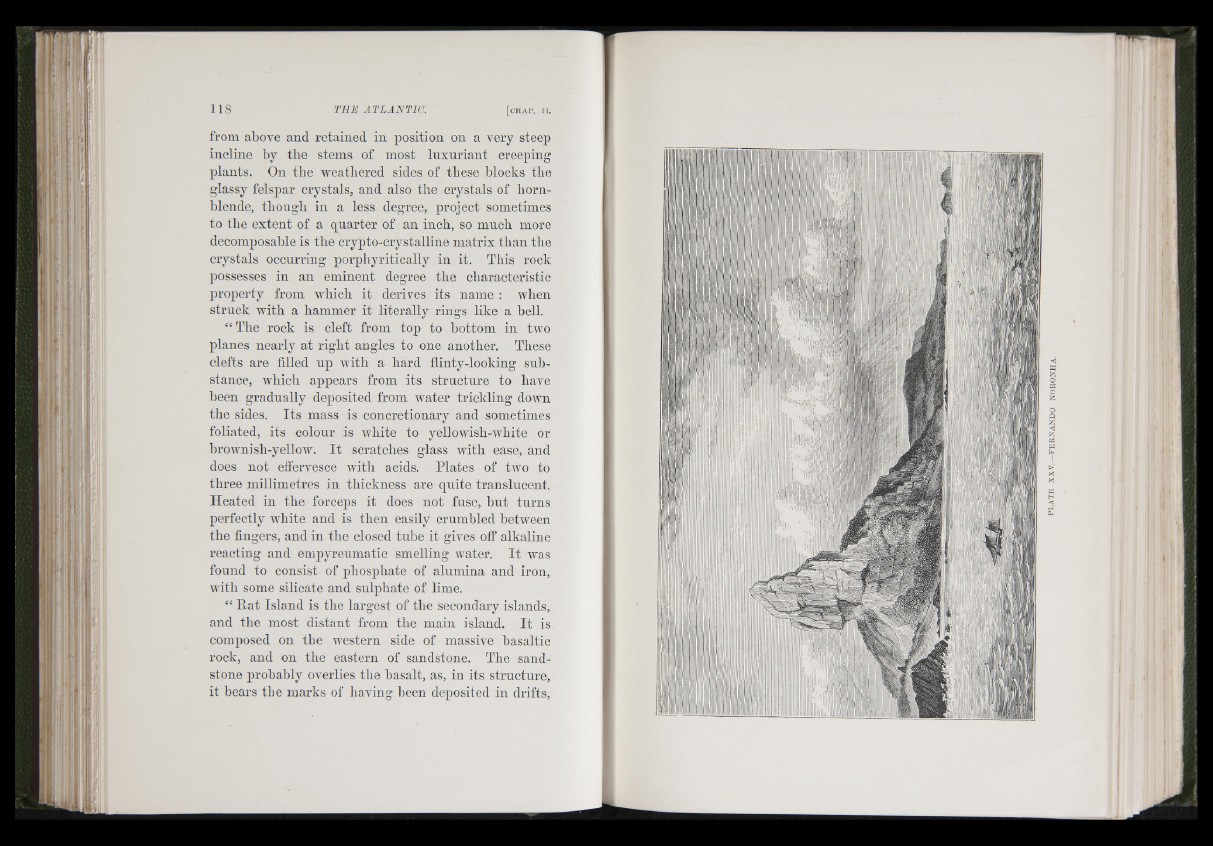
IV t ,
! t : ; b
lljV Y
V L . . j
il il
ik :
* ; i
î- ' !'■ 'i"'
118 THE ATLANTIC. [CHAP. I I .
froni aboA'e and retained in position on a very steep
incline by the stems of most luxuriant creeping
plants. On the weathered sides of tLese blocks the
glassy felsj)ar crystals, and also the crystals of hornblende,
though in a less degree, project sometimes
to the extent of a quarter of an inch, so much more
decomposable is the crypto-crystalline matrix than the
crystals occurring porpliyritically in it. This rock
possesses in an eminent degree the characteristic
property from Avhich it derives its name : when
struck Avith a hammer it literally rings like a hell.
“ The rock is cleft from top to bottom in two
planes nearly at right angles to one another. These
clefts are filled up Avith a hard flinty-looking substance,
Avhich appears from its structure to have
been gradually deposited from Avater trickling doAvn
the sides. Its mass is concretionary and sometimes
foliated, its colour is white to yelloAA'ish-white or
hroAvnish-yellow. I t scratches glass Avith ease, and
does not effervesce Avith acids. Plates of tAvo to
three millimetres in thickness are quite translucent.
Heated in the forceps it does not fuse, hut turns
perfectly white and is then easily crumbled between
the fingers, and in the closed tube it gives off alkaline
reactmg and empyreumatic smelling water. I t was
found to consist of phosphate of alumina and iron,
AA'itli some silicate and sulphate of lime.
“ E a t Island is the largest of the secondary islands,
and the most distant from the main island. I t is
composed on the AA'estern side of massive basaltic
rock, and on the eastern of sandstone. The sandstone
probably overlies the basalt, as, in its structure,
it hears tbe marks of having been deposited in drifts,
i :
I I
f ■ ! 1
• I
'i
: i